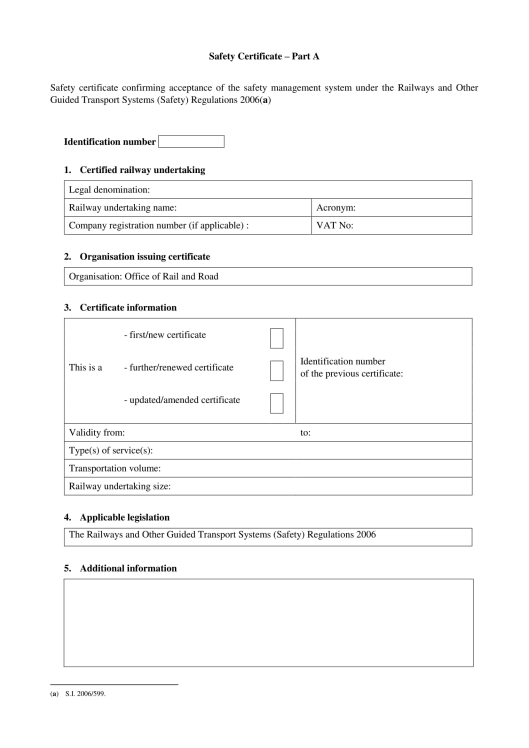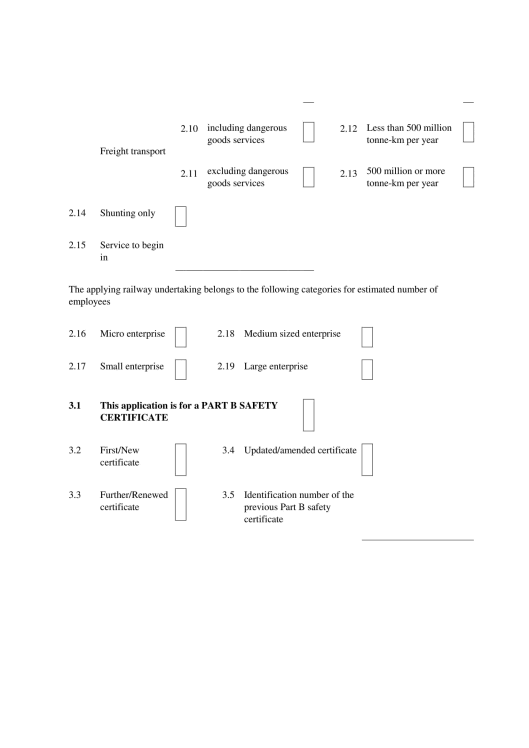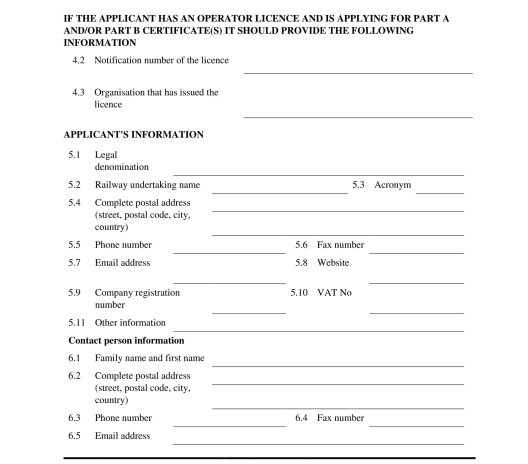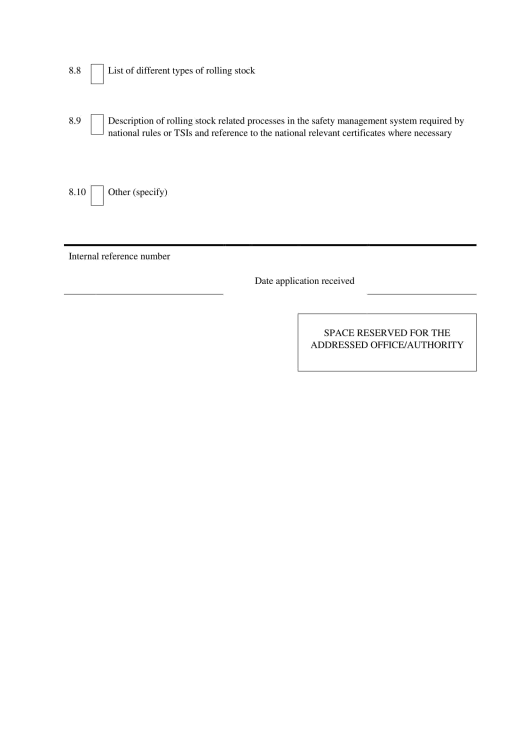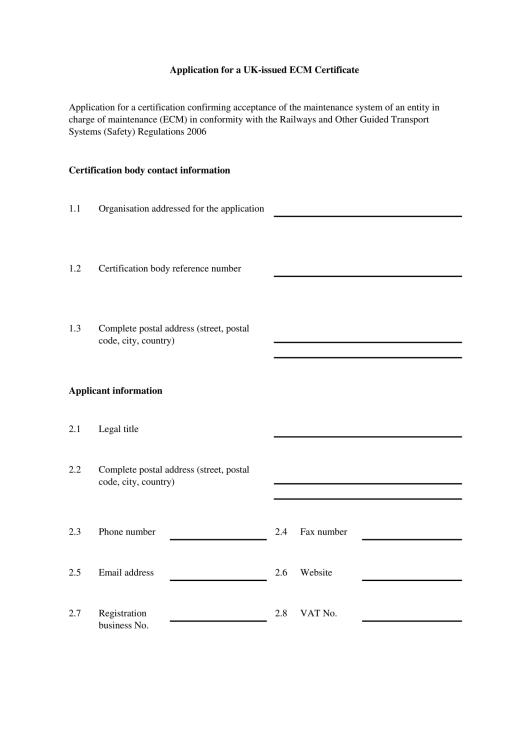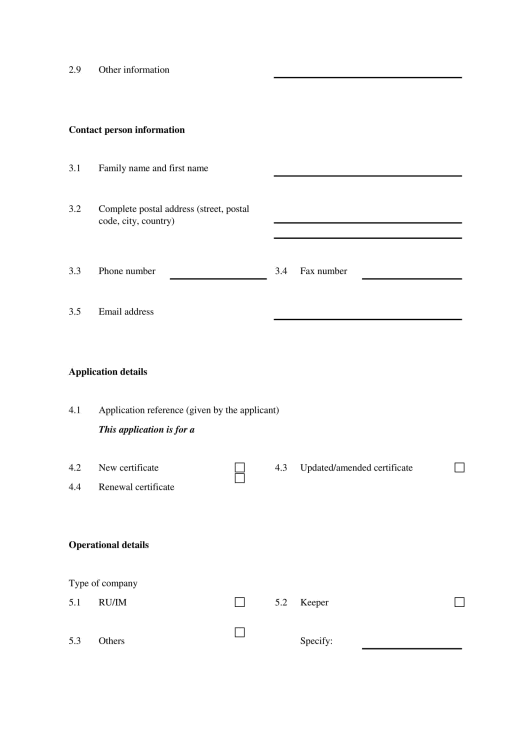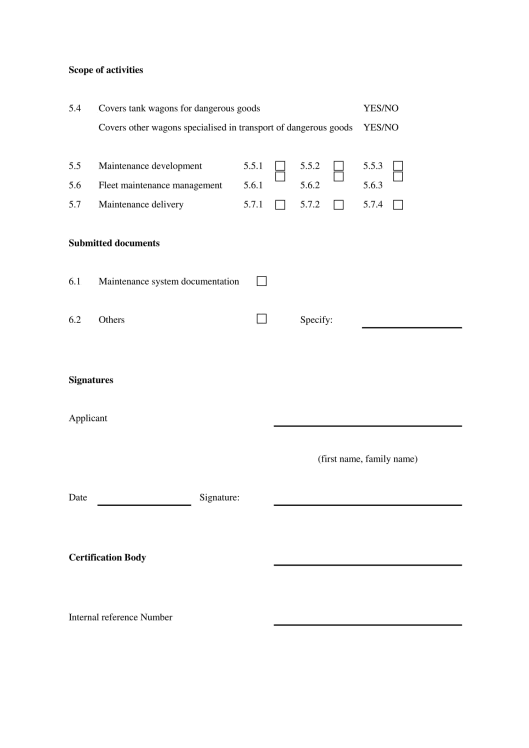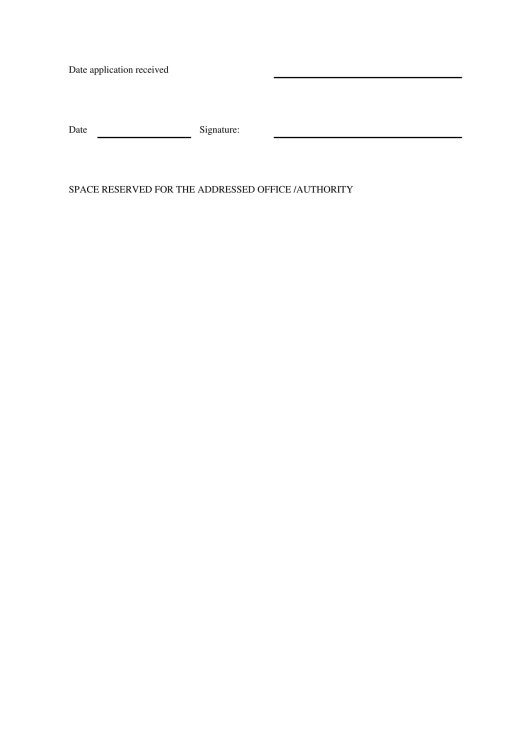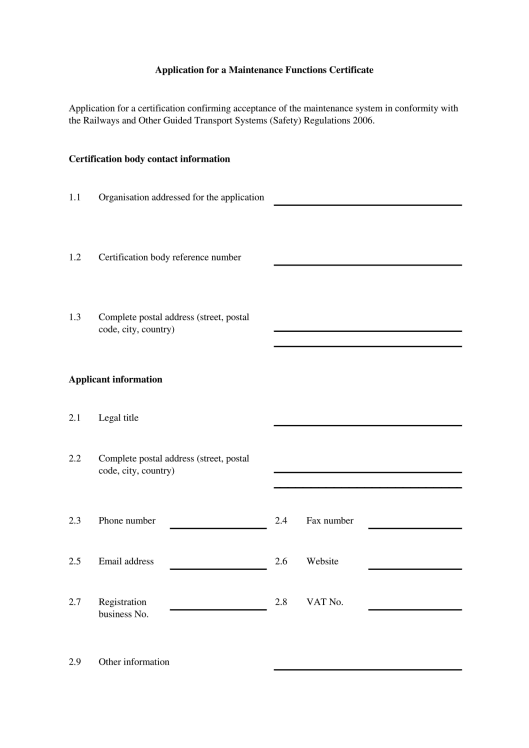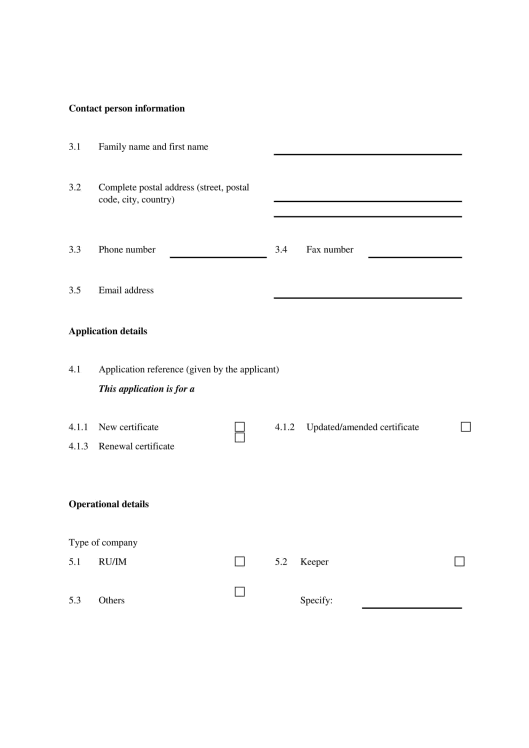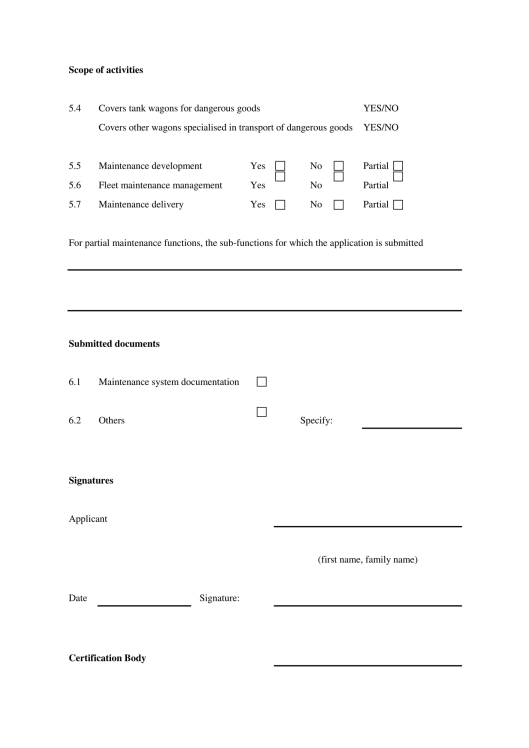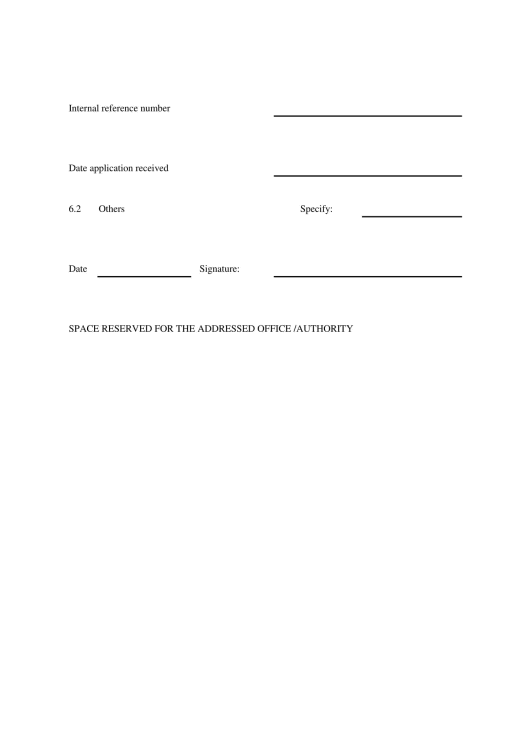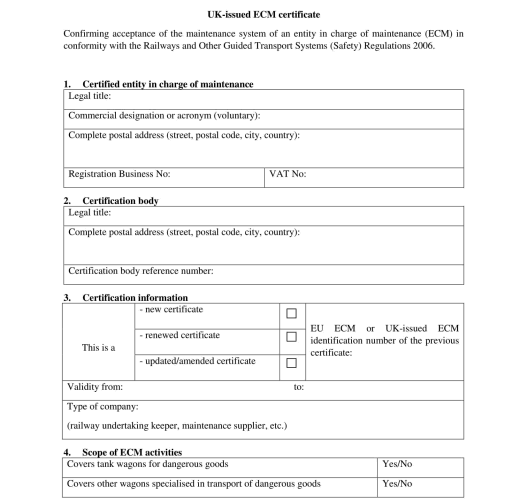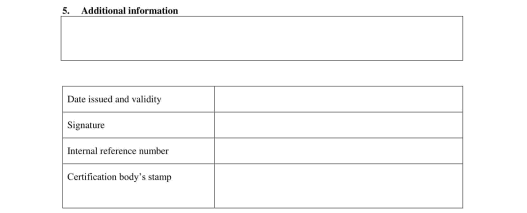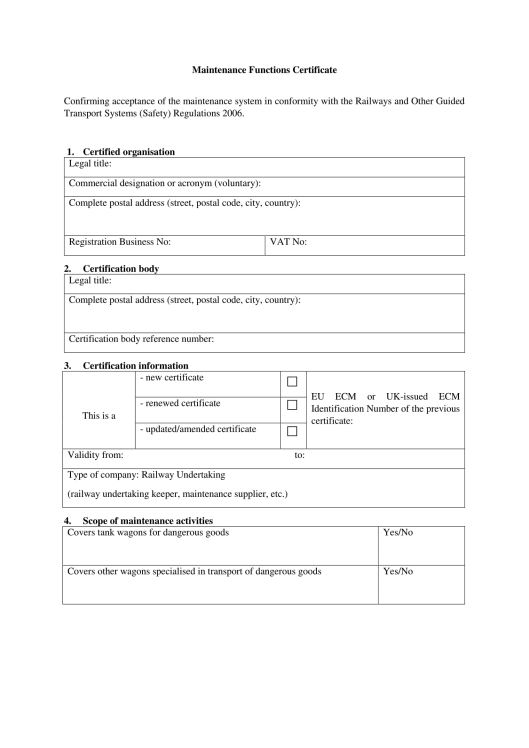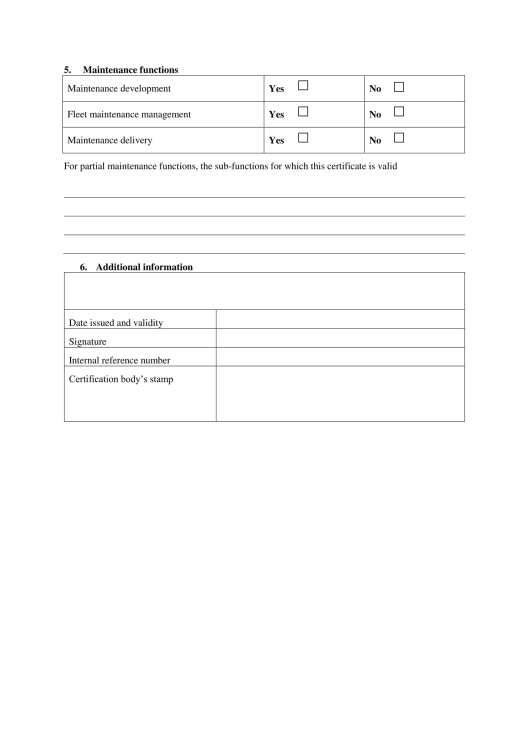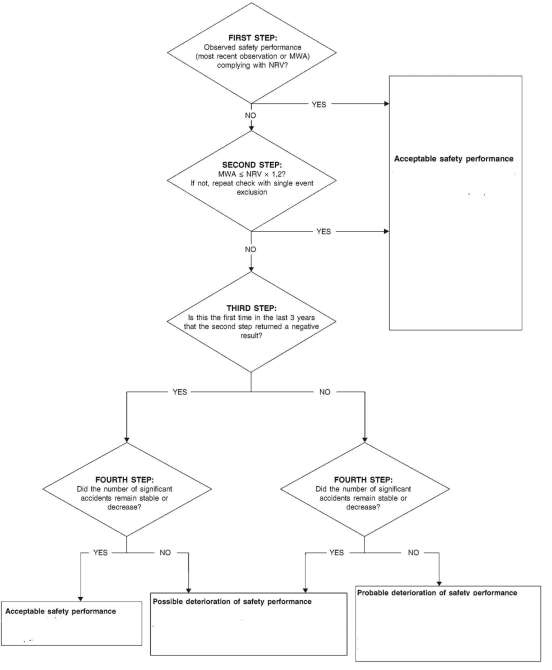- Y Diweddaraf sydd Ar Gael (Diwygiedig)
- Gwreiddiol (a wnaed Fel)
The Railways and Other Guided Transport Systems (Safety) Regulations 2006
You are here:
- Offerynnau Statudol y Deyrnas Unedig
- 2006 No. 599
- Schedules only
- Dangos Graddfa Ddaearyddol(e.e. Lloegr, Cymru, Yr Alban aca Gogledd Iwerddon)
- Dangos Llinell Amser Newidiadau
Changes over time for: The Railways and Other Guided Transport Systems (Safety) Regulations 2006 (Schedules only)
Changes to legislation:
There are currently no known outstanding effects for the The Railways and Other Guided Transport Systems (Safety) Regulations 2006.![]()
Changes to Legislation
Revised legislation carried on this site may not be fully up to date. At the current time any known changes or effects made by subsequent legislation have been applied to the text of the legislation you are viewing by the editorial team. Please see ‘Frequently Asked Questions’ for details regarding the timescales for which new effects are identified and recorded on this site.
Regulations 5(1)(c), and 6(1)(b)
SCHEDULE 1U.K.SAFETY MANAGEMENT SYSTEM
Requirements on the safety management systemU.K.
1. The safety management system shall—
(a)describe the distribution of responsibilities, within the operation, for the safety management system;
(b)show how control of the safety management system by the management on different levels is secured;
(c)show how persons carrying out work or voluntary work directly in relation to the operation and their representatives on all levels are involved with the safety management system; and
(d)show how continuous improvement of the safety management system is ensured.
Basic elements of the safety management systemU.K.
2. The basic elements of a safety management system are—
(a)a statement of the safety policy which has been approved by the chief executive and communicated to all persons carrying out work or voluntary work directly in relation to the operation;
(b)qualitative and quantitative targets for the maintenance and enhancement of safety and plans and procedures for reaching those targets;
(c)procedures to meet relevant technical and operational standards or other requirements as set out in—
(i)TSIs [F1NTSNs];
(ii)national safety rules;
(iii)other relevant safety requirements; and
(iv)decisions of the [F2Office of Rail and Road] addressed to the transport operator in question,
and procedures to ensure compliance with the requirements listed in this paragraph throughout the life-cycle of any relevant equipment or operation which is subject to the requirement in question.
(d)procedures and methods for carrying out risk evaluation and implementing risk control measures when—
(i)there is a change in the way in which the operation in question is carried out; or
(ii)new material is used in the operation in question,
which gives rise to new risks in relation to any infrastructure or the operation being carried out;
(e)provision of programmes for training of persons carrying out work or voluntary work directly in relation to the operation and systems to ensure that the competence of such persons is maintained and that they carry out tasks accordingly;
(f)arrangements for the provision of sufficient information relevant to safety—
(i)within the operation in question; and
(ii)between the operator in question and any other transport operator or an applicant for a safety certificate or a safety authorisation who carries out or who intends to carry out operations on the same infrastructure;
(g)procedures and formats for the documentation of safety information;
(h)procedures to control the lay out of, and changes to, vital safety information;
(i)procedures to ensure that accidents, incidents, near misses and other dangerous occurrences are reported, investigated and analysed and that necessary preventative measures are taken;
(j)provision of plans for action, alerts and information in the case of an emergency which are to be agreed with any public body, including the emergency services, that may be involved in such an emergency; and
(k)provisions for recurrent internal auditing of the safety management system.
Textual Amendments
F1Word in Sch. 1 para. 2(c)(i) inserted (31.12.2020) by The Railways (Interoperability) (Amendment) (EU Exit) Regulations 2019 (S.I. 2019/345), reg. 1(2), Sch. 8 para. 3(d); 2020 c. 1, Sch. 5 para. 1(1)
F2Words in Sch. 1 para. 2(c)(iv) substituted (16.10.2015) by The Office of Rail Regulation (Change of Name) Regulations 2015 (S.I. 2015/1682), reg. 1(2), Sch. para. 6(v)
Regulation 7(1)(b)
SCHEDULE 2U.K.APPLICATION FOR A SAFETY CERTIFICATE
PART 1U.K.INFORMATION TO BE INCLUDED FOR A MAINLINE APPLICATION
1. The following information shall be included in relation to Part A of a safety certificate—U.K.
(a)particulars of the type and extent of the operation in respect of which the application is made; and
(b)either—
[F3(i)a copy of a current certificate issued to the applicant by—
(aa)the Office of Rail and Road;
F4( bb). . . . . . . . . . . . . . . . . . . . . . . . . . . . . . . .
(cc)the safety authority in Northern Ireland; or
(dd)the safety authority for the tunnel system,
which relates to an equivalent railway operation; or]
(ii)particulars of how the safety management system of the applicant meets the requirements set out in regulation 5(1) to (4).
Textual Amendments
F3Sch. 2 para. 1(b)(i) substituted (31.12.2020) by The Rail Safety (Amendment etc.) (EU Exit) Regulations 2019 (S.I. 2019/837), regs. 1, 3(11) (as amended by S.I. 2020/786, regs. 1(2)(b)(i), 7(6)); 2020 c. 1, Sch. 5 para. 1(1)
F4Sch. 2 para. (1)(b)(i)(bb) omitted (4.3.2024) by virtue of The Railways (Revocation and Consequential Provision) Regulations 2024 (S.I. 2024/127), regs. 1(2), 3(4)
2. The following information shall be included in relation to Part B of a safety certificate—U.K.
(a)information on the [F5NTSNs], national safety rules and other safety requirements relevant to the applicant's operation including those relevant to persons carrying out work in relation to the operation and the applicant's vehicles and an explanation of how compliance with these requirements is ensured by the safety management system;
(b)information on the different types of work being carried out by persons directly in relation to the operation including evidence of how the applicant ensures that when such persons are carrying out such work that they are doing so in accordance with the requirements of any relevant [F5NTSNs] and national safety rules; and
(c)information on the different types of rolling stock used for the operation in question including evidence that they meet any relevant [F5NTSNs] and national safety rules,
and where information is submitted concerning an interoperability constituent or a subsystem which is subject to and complies with the requirements of the [F6Interoperability Regulations] then only brief details need be supplied concerning compliance of such constituents or subsystems with relevant [F5NTSNs] and other requirements of those Regulations and in this paragraph “interoperability constituent” and “subsystem” shall have the same meaning as in the [F7Interoperability Regulations].
Textual Amendments
F5Word in Sch. 2 para. 2 substituted (31.12.2020) by virtue of The Railways (Interoperability) (Amendment) (EU Exit) Regulations 2019 (S.I. 2019/345), reg. 1(2), Sch. 8 para. 3(e); 2020 c. 1, Sch. 5 para. 1(1)
F6Words in Sch. 2 para. 2 substituted (26.8.2011) by The Railways and Other Guided Transport Systems (Safety) (Amendment) Regulations 2011 (S.I. 2011/1860), regs. 1, 2(11)(a)
F7Words in Sch. 2 para. 2 substituted (26.8.2011) by The Railways and Other Guided Transport Systems (Safety) (Amendment) Regulations 2011 (S.I. 2011/1860), regs. 1, 2(11)(b)
PART 2U.K.INFORMATION TO BE INCLUDED FOR A NON-MAINLINE APPLICATION
3. Particulars of the type and extent of the operation in respect of which the application is made.U.K.
4. Particulars of how the safety management system of the applicant meets the requirements set out in regulation 6.U.K.
5. Information on the—U.K.
(a)relevant statutory provisions which make provision in relation to safety which are applicable to the operation; and
(b)technical specifications and procedures relating to operations and maintenance that are relevant to the safety of the transport system which the applicant proposes to follow,
and an explanation of how compliance with these requirements is ensured by the safety management system.
6. Information on the different types of work or voluntary work being carried out by persons directly in relation to the operation including evidence of how the applicant ensures that when such persons are carrying out work or voluntary work in relation to the operation that they are doing so in accordance with relevant requirements of the relevant statutory provisions referred to in paragraph 5(a).U.K.
7. Information on the different types of rolling stock used for the operation including evidence that they meet relevant requirements of the relevant statutory provisions referred to in paragraph 5(a).U.K.
Regulation 20(1)(c)
F8SCHEDULE 3U.K.COMMON SAFETY INDICATORS
. . . . . . . . . . . . . . . . . . . . . . . . . . . . . . . .
Textual Amendments
F8Sch. 3 omitted (11.12.2015) by virtue of The Railways and Other Guided Transport Systems (Safety) (Amendment) Regulations 2015 (S.I. 2015/1917), regs. 1, 2(4)
Regulation F9... 6(4)(a)
SCHEDULE 4U.K.WRITTEN SAFETY VERIFICATION SCHEME REQUIREMENTS
Textual Amendments
F9Words in Sch. 4 heading omitted (21.5.2013) by virtue of The Railways and Other Guided Transport Systems (Miscellaneous Amendments) Regulations 2013 (S.I. 2013/950), regs. 1, 3(15)
INFORMATION TO BE INCLUDED IN A SAFETY VERIFICATION SCHEMEU.K.
1.—(1) The arrangements for the selection, appointment and retention of the competent person, which arrangements should at least provide for:U.K.
(a)the appointment of the competent person at an early stage in the design selection process;
(b)the involvement of the competent person in the establishing of the criteria to be applied in the verification process and the design selection process; and
(c)the communication to the competent person of information necessary for the proper implementation, or revision, of the verification scheme and which information is necessary in order for the competent person to undertake the verification.
(2) The arrangements for the examination and testing of new or altered vehicles or infrastructure, which arrangements should at least provide for:
(a)the means of controlling risks that arise during the carrying out of any testing or trials prior to placing in service; and
(b)the standards and criteria to be applied in the verification process.
(3) The arrangements for the review and revision of the verification scheme.
(4) The arrangements for the making and preservation of records showing—
(a)the examination and testing carried out to the new or altered vehicles or infrastructure prior to its being placed in service;
(b)the findings of that examination and testing;
(c)any remedial action recommended as a result of that examination and testing; and
(d)any remedial action performed.
(5) The arrangements for communicating the matters contained in sub-paragraphs (1) to (4) of this Schedule to an appropriate level in the management system of the transport operator or responsible person as the case may be.
Regulation 29(7)
F10SCHEDULE 5U.K.TRANSITIONAL PROVISIONS AND SAVINGS-SAFETY CERTIFICATES AND SAFETY AUTHORISATIONS
. . . . . . . . . . . . . . . . . . . . . . . . . . . . . . . .
Textual Amendments
F10Sch. 5 omitted (21.5.2013) by virtue of The Railways and Other Guided Transport Systems (Miscellaneous Amendments) Regulations 2013 (S.I. 2013/950), regs. 1, 3(16)
Regulation 33
SCHEDULE 6U.K.CONSEQUENTIAL AMENDMENTS
Amendment to the Reporting of Injuries, Diseases and Dangerous Occurrences Regulations 1995U.K.
F111. . . . . . . . . . . . . . . . . . . . . . . . . . . . . . . . .
Textual Amendments
F11Sch. 6 para. 1 revoked (1.10.2013) by The Reporting of Injuries, Diseases and Dangerous Occurrences Regulations 2013 (S.I. 2013/1471), regs. 1(2), 18(1), Sch. 4 (with regs. 18(3), 19)
Amendment to the Railway Safety (Miscellaneous Provisions) Regulations 1997U.K.
2.—(1) The Railway Safety (Miscellaneous Provisions) Regulations 1997 M1 shall be amended as follows.
(2) In regulation 2(1) (interpretation)—
(a)after the definition of “factory” insert— “ “guided bus system” and “guided transport” have the meanings assigned to them by regulation 2(1) of the Railways and Other Guided Transport Systems (Safety) Regulations 2006; ”;
(b)omit the definition of “ prescribed system of guided transport ”;
(c)for the definition of “tramway” substitute—
““tramway” has the meaning assigned to it by regulation 2(1) of the Railways and Other Guided Transport Systems (Safety) Regulations 2006;”; and
(d)in the definition of “transport system” for the words before sub-paragraph (a) substitute—
““transport system” means a railway, a tramway, a trolley vehicle system or any other system using guided transport except that it does not include a guided bus system or any part of any of those systems which—;”; and
(e)after the definition of “transport system” insert—
““trolley vehicle system” has the meaning assigned to it by regulation 2(1) of Railways and Other Guided Transport Systems (Safety) Regulations 2006;”.
Marginal Citations
M1S.I. 1997/553, as amended by S.I. 1999/2024.
Amendment to the Railway Safety Regulations 1999U.K.
3.—(1) The Railway Safety Regulations 1999 M2 shall be amended as follows.
(2) In regulation 2 (interpretation)—
(a)in paragraph (1)—
(i)for the definition of “infrastructure controller” substitute—
““infrastructure controller” means a person who controls railway infrastructure;”;
(ii)after the definition of “railway” insert—
““railway infrastructure” means fixed assets used for the operation of a railway including its permanent way and plant used for signalling or exclusively for supplying electricity for operational purposes to the railway, but it does not include a station;”;
(iii)after the definition of “speed restriction” insert—
““station” means a railway passenger station or terminal, but does not include any permanent way or plant used for signalling or exclusively for supplying electricity for operational purposes to the railway;”; and
(b)after paragraph (4) add—
“(4A) Any reference in these Regulations to a person who controls railway infrastructure is a reference to a person who—
(a)in the course of a business or other undertaking carried on by him (whether for profit or not);
(b)is in operational control of that infrastructure,
except that where such control is for the time being exercised by a person undertaking maintenance, repair or alteration work on the infrastructure, it is a reference to a person who would be in operational control of the infrastructure if such work were not being undertaken.”.
(3) In paragraph 2 to the Schedule (meaning of railway), for the definition of “tramway” substitute—
““tramway” means a system of transport used wholly or mainly for the carriage of passengers—
(a)which employs parallel rails which—
(i)provide support and guidance for vehicles carried on flanged wheels; and
(ii)are laid wholly or partly along a road or in any other place to which the public has access (including a place to which the public only has access on making payment); and
(b)on any part of which the permitted speed is such as to enable the driver to stop a vehicle in the distance he can see to be clear ahead;”.
Marginal Citations
M2S.I. 1999/2244, as amended by S.I. 2000/2688 and 2001/3291.
Amendment to the Enterprise Act 2002 (Part 9 Restrictions on Disclosure of Information) (Amendment and Specification) Order 2003U.K.
4.—(1) The Enterprise Act 2002 (Part 9 Restrictions on Disclosure of Information) (Amendment and Specification) Order 2003 M3 shall be amended as follows.
(2) In Schedule 4 (subordinate legislation specified for the purposes of section 241(3) (statutory functions) of the Enterprise Act 2002)–
[F12(a)at the end, add “Parts 2 and 3 of the Railways and Other Guided Transport Systems (Safety) Regulations 2006.”;]
[F13(b)omit “Railways (Safety Case) Regulations 2000.”.]
Textual Amendments
F12Sch. 6 para. 4(2)(a) added (10.4.2006) by The Railways and Other Guided Transport Systems (Safety) (Amendment) Regulations 2006 (S.I. 2006/1057), regs. 1, 2(2)
F13Sch. 6 para. 4(2)(b) added (1.10.2006) by The Railways and Other Guided Transport Systems (Safety) (Amendment) Regulations 2006 (S.I. 2006/1057), regs. 1, 2(3)
Marginal Citations
Regulation 34
SCHEDULE 7U.K.REVOCATION
| (1) | (2) | (3) |
|---|---|---|
| Regulations revoked | References | Extent of revocation |
| ROTS | S.I. 1994/157 | The whole Regulations |
| The Railways (Safety Critical Work) Regulations 1994 | S.I. 1994/299 | The whole Regulations |
| The Railways (Safety Case) Regulations 2000 | S.I. 2000/2688 | The whole Regulations |
| The Railway Safety (Miscellaneous Amendments) Regulations 2001 | S.I. 2001/3291 | Regulations 2, 3, 4, 5, 6, 7, 8, 9, 10, 11, 12, 13, 14, 15 and 16 |
| The Railways (Safety case) (Amendment) Regulations 2003 | S.I. 2003/579 | The whole Regulations |
| The Cableway Installations Regulations 2004 | S.I. 2004/129 | Regulation 31 |
Regulation 9A
[F14SCHEDULE 8U.K.Format for safety certificates and applications
Textual Amendments
F14Schs. 8-11 inserted (31.12.2020) by The Rail Safety (Amendment etc.) (EU Exit) Regulations 2019 (S.I. 2019/837), reg. 1, Sch. para. 1 (as amended in Sch. 11 paras. 14, 16, 17 by S.I. 2019/1310, reg. 1(2)(c), Sch. 1 paras. 2, 3, 4); 2020 c. 1, Sch. 5 para. 1(1)
(This Schedule substantially reproduces the provisions of Commission Regulation (EC) No 653/2007 on the use of a common European format for safety certificates and application documents in accordance with Article 10 of Directive 2004/49/EC of the European Parliament and of the Council and on the validity of safety certificates delivered under Directive 2001/14/EC, with amendments for the purpose of addressing deficiencies arising out of the UK's withdrawal from the EU.)
PART 1U.K.
1. Where Part A of a safety certificate is to be issued, renewed, updated, amended or revoked by the Office of Rail and Road, it must be in the form provided in Part 2.U.K.
2. Where Part B of a safety certificate is to be issued, renewed, updated, amended or revoked by the Office of Rail and Road, it must be in the form provided in Part 3U.K.
3. An application for a new, updated, amended or renewed—U.K.
(a)Part A of a safety certificate;
(b)Part B of a safety certificate; or
(c)Part A of a safety certificate and Part B of a safety certificate where a combined application is made,
must be made in the form provided in Part 4.
PART 2U.K.Part A of a safety certificate
4. The form referred to in paragraph 1 follows.U.K.
PART 3U.K.Part B of a safety certificate
5. The form referred to in paragraph 2 follows.U.K.
PART 4U.K. F15F16Application form for a safety certificate
Textual Amendments
F15Sch 8: in the inserted Sch. 8 Pt 4, in the Application form for a safety certificate in 8.5, 8.7 and 8.9, in each place that it occurs, “NTSNs” substituted for “TSIs” (31.12.2020 immediately before IP completion day) by The Railways (Miscellaneous Amendments, Revocations and Transitional Provisions) (EU Exit) Regulations 2020 (S.I. 2020/786), regs. 1(2)(b)(i), 7(8)(a)
F16Sch 8: in the inserted Sch. 8 Pt 4, in the Guidelines for Compilation in 8.5, 8.7 and 8.9, in each place that it occurs, “NTSNs” substituted for “TSIs” (31.12.2020 immediately before IP completion day) by The Railways (Miscellaneous Amendments, Revocations and Transitional Provisions) (EU Exit) Regulations 2020 (S.I. 2020/786), regs. 1(2)(b)(i), 7(8)(b)
6. The form referred to in paragraph 3 follows.U.K.
Regulation 18A(4)
SCHEDULE 9U.K.Applications for UK-issued ECM certificates by entities in charge of maintenance
(This Schedule substantially reproduces Annexes IV and V of Commission Regulation (EU) No 445/2011 on a system of certification of entities in charge of maintenance for freight wagons and amending Regulation (EC) No 653/2007, with amendments for the purpose of addressing deficiencies arising out of the UK's withdrawal from the EU.) M4
Marginal Citations
M4The operative provisions of Commission Regulation (EU) No 445/2011 are substantially reproduced in Schedule 10.
PART 1U.K.
1. Applications to certification bodies must be made—U.K.
(a)where the applicant is an entity in charge of maintenance for freight wagons applying for a UK-issued ECM certificate, in the form provided in Part 2;
(b)where the applicant is a contractor applying for a maintenance functions certificate, in the form provided in Part 3.
2.—(1) A UK-issued ECM certificate must be issued in the form provided in Part 4.U.K.
(2) A maintenance functions certificate must be issued in the form provided in Part 5.
3. For the purposes of this Schedule, a “maintenance functions certificate” is a certificate issued pursuant to paragraph 8 of Schedule 10.U.K.
PART 2U.K.Application for a UK-issued ECM certificate
4. The application form referred to in paragraph 1(a) follows.U.K.
PART 3U.K.Application for a maintenance functions certificate
5. The form referred to in paragraph 1(b) follows.U.K.
PART 4U.K.UK-issued ECM certificate
6. The form referred to in paragraph 2(1) follows.U.K.
PART 5U.K.Maintenance functions certificate
7. The form referred to in paragraph 2(2) follows.U.K.
Regulation 18A(4)
SCHEDULE 10U.K.System of certification of entities in charge of maintenance in respect of Great Britain
(This Schedule substantially reproduces the provisions of Commission Regulation (EU) No 445/2011 on a system of certification of entities in charge of maintenance for freight wagons and amending Regulation (EC) No 653/2007 other than Annexes IV and V, with amendments for the purpose of addressing deficiencies arising out of the UK's withdrawal from the EU.) M5
Marginal Citations
M5Annexes IV and V of Commission Regulation (EU) No 445/2011 are substantially reproduced in Schedule 9.
PART 1U.K.Principles
PurposeU.K.
1. This Schedule sets out a system of certification of entities in charge of maintenance for freight wagons for the purpose of providing evidence that such an entity has established its maintenance system and can meet the requirements for ensuring the safe state of running of any freight wagon for which it is in charge of maintenance.
ScopeU.K.
2.—(1) The system of certification applies to any entity in charge of maintenance for freight wagons to be used on the railway network within Great Britain.
(2) Maintenance workshops or any organisation taking on a subset of the functions specified in paragraph 4 may apply the system of certification on a voluntary basis, based on the principles specified in paragraph 8 and Part 2.
(3) References to an infrastructure manager in paragraphs 5 and 7 are to be understood as relating to its operations with freight wagons for transporting materials for construction or for infrastructure maintenance activities. When it operates freight wagons for this purpose, an infrastructure manager is to be deemed to do so in the capacity of a railway undertaking.
InterpretationU.K.
3. In this Schedule—
“accreditation” has the meaning in Regulation (EC) No 765/2008 of the European Parliament and of the Council of 9th July 2008 setting out the requirements for accreditation and market surveillance relating to the marketing of products and repealing Regulation (EEC) No 339/93;
“causes” means actions, omissions, events or conditions, or a combination thereof, which led to the accident or incident;
“common safety methods” (“CSMs”) means the methods developed to describe how safety levels and achievement of safety targets and compliance with other safety requirements are assessed;
“designated standard” has the meaning provided in Article 3A of Commission Implementing Regulation (EU) No 402/2013 on the common safety method for risk evaluation and assessment and repealing Regulation (EC) No 352/2009, as it has effect in Great Britain;
“incident” means any occurrence, other than an accident, associated with the operation of trains and affecting the safety of operation;
“infrastructure manager” means any body or undertaking that is responsible in particular for establishing and maintaining railway infrastructure, or a part thereof, as defined in Article 3 of Directive 91/440/EEC, which may also include the management of infrastructure control and safety systems. The functions of the infrastructure manager on a network or part of a network may be allocated to different bodies or undertakings;
“investigation” means a process conducted for the purpose of accident and incident prevention which includes the gathering and analysis of information, the drawing of conclusions, including the determination of causes and, when appropriate, the making of safety recommendations;
“maintenance workshop” means a mobile or fixed entity composed of staff, including those with management responsibility, tools and facilities organised to deliver maintenance of vehicles, parts, components or sub-assemblies of vehicles;
“national safety authority” means one or both of the safety authority in Great Britain and the safety authority for the tunnel system;
“railway system” means the totality of the subsystems in Great Britain for structural and operational areas, as defined in paragraph 2(1) to 2(7) of Annex II to Directive 2008/57/EC, as well as the management and operation of the system as a whole;
“railway undertaking” means a public or private undertaking, licensed according to applicable legislation, the activity of which is to provide transport of goods and/or passengers by rail on the basis that the undertaking must ensure traction; this also includes undertakings which provide traction only;
“release to service” means the assurance given to the fleet maintenance manager by the entity delivering the maintenance that maintenance has been delivered according to the maintenance orders;
“return to operation” means the assurance, based on a release to service, given to the user, such as a railway undertaking or a keeper, by the entity in charge of maintenance that all appropriate maintenance works have been completed and the wagon, previously removed from operation, is in a condition to be used safely, possibly subject to temporary restrictions of use.
Maintenance systemU.K.
4.—(1) The maintenance system is to be composed of the following functions—
(a)the management function, which supervises and coordinates the maintenance functions referred to in paragraphs (b) to (d) and ensures the safe state of the freight wagon in the railway system;
(b)the maintenance development function, which is responsible for the management of the maintenance documentation, including the configuration management, based on design and operational data as well as on performance and return on experience;
(c)the fleet maintenance management function, which manages the freight wagon's removal for maintenance and its return to operation after maintenance;
(d)the maintenance delivery function, which delivers the required technical maintenance of a freight wagon or parts of it, including the release to service documentation.
(2) The entity in charge of maintenance must ensure that the functions referred to in sub paragraph (1) comply with the requirements and assessment criteria set out in Part 4.
(3) The entity in charge of maintenance must carry out the management function itself, but may outsource the maintenance functions referred to in paragraphs (b) to (d) of sub paragraph (1), or parts of them, to other contracting parties subject to the provisions of paragraph 8. Where it resorts to outsourcing, the entity in charge of maintenance must ensure that the principles set out in Part 2 are applied.
(4) Regardless of the outsourcing arrangements in place, the entity in charge of maintenance is responsible for the outcome of the maintenance activities it manages and must establish a system to monitor performance of those activities.
Relationships between parties in the maintenance processU.K.
5.—(1) Each railway undertaking or infrastructure manager must ensure that the freight wagons it operates, before their departure, have a certified entity in charge of maintenance and that the use of the wagon corresponds to the scope of the certificate.
(2) All parties involved in the maintenance process must exchange relevant information about maintenance in accordance with the criteria listed in paragraphs 27 and 28.
(3) Following contractual arrangements, a railway undertaking may request information for operational purposes on the maintenance of a freight wagon. The entity in charge of the maintenance of the freight wagon must respond to such requests either directly or through other contracting parties.
(4) Following contractual arrangements, an entity in charge of maintenance may request information on the operation of a freight wagon. The railway undertaking or the infrastructure manager must respond to such requests either directly or through other contracting parties.
(5) All contracting parties must exchange information on safety-related malfunctions, accidents, incidents, near-misses and other dangerous occurrences as well as on any possible restriction on the use of freight wagons.
(6) The certificates of entities in charge of maintenance are to be accepted as proof of the ability of a railway undertaking or infrastructure manager to meet the requirements governing maintenance and the control of contractors and suppliers specified in Part 3, points in B.1, B.2, B.3 and C.1 of Commission Regulation (EU) No 1158/2010 of 9th December 2010 on a common safety method for assessing conformity with the requirements for obtaining railway safety certificates as it has effect in Great Britain, and in Commission Regulation (EU) No 1169/2010 of 10th December 2010 on a common safety method for assessing conformity with the requirements for obtaining a railway safety authorisation as it has effect in Great Britain, unless the national safety authority can demonstrate the existence of a substantial safety risk.
(7) If a contracting party, in particular a railway undertaking, has a justifiable reason to believe that a particular entity in charge of maintenance does not comply with the requirements of regulation 18A, or with paragraph 55B of the Schedule to the Channel Tunnel (Safety) (Amendment) Order 2013, or with the certification requirements of this Schedule, it must promptly inform the certification body thereof. The certification body must take appropriate action to check if the claim of non-compliance is justified and must inform the parties involved, including the competent national safety authority if relevant, of the results of its investigation.
(8) When there is a change of entity in charge of maintenance, the registration holder must inform in due time the registration entity, as defined in the Interoperability Regulations, so that the latter may update the National Vehicle Register.
(9) The former entity in charge of maintenance must deliver the maintenance documentation to either the registration holder or the new entity in charge of maintenance.
(10) The former entity in charge of maintenance is relieved of its responsibilities when it is removed from the National Vehicle Register. If on the date of de-registration of the former entity in charge of maintenance any new entity has not acknowledged its acceptance of entity in charge of maintenance status, the registration of the vehicle is suspended.
Certification bodiesU.K.
6.—(1) UK-issued ECM certificates may be awarded by any competent certification body, chosen by the applicant entity in charge of maintenance.
(2) Certification bodies must comply with the general criteria and principles set out in Part 3 and with any [F17relevant] sectoral accreditation schemes.
(3) Decisions taken by the certification bodies are subject to judicial review.
(4) In order to harmonise approaches to the assessment of applications, certification bodies within the United Kingdom must cooperate with each other.
Textual Amendments
F17Word in Sch. 10 para. 6(2) substituted (30.6.2023) by The Railways and Other Guided Transport Systems (Safety) (Amendment) Regulations 2023 (S.I. 2023/540), regs. 1, 3(4)
System of certification for entities in charge of maintenanceU.K.
7.—(1) Certification must be based on an assessment of the ability of the entity in charge of maintenance to meet the relevant requirements in Part 4 and to apply them consistently. It must include a system of surveillance to ensure continuing compliance with the applicable requirements after award of the UK-issued ECM certificate.
(2) The entities in charge of maintenance must apply for certification using the form in Part 2 of Schedule 9 and providing documentary evidence of the procedures specified in Part 4. They must promptly submit all supplementary information requested by the certification body. In assessing applications, certification bodies must apply the requirements and assessment criteria set out in Part 4.
(3) The certification body must take a decision no later than 4 months after all the information required and any supplementary information requested has been submitted to it by the entity in charge of maintenance applying for the certificate. The certification body must undertake the necessary assessment at the site or sites of the entity in charge of maintenance prior to the award of the certificate. The decision on the award of the certificate must be communicated to the entity in charge of maintenance using the relevant form in Part 4 of Schedule 9.
(4) A UK-issued ECM certificate is valid for a period up to 5 years. The holder of the certificate must without delay inform the certification body of all significant changes in the circumstances applying at the time the original certificate was awarded to allow the certification body to decide whether to amend, renew or revoke it.
(5) The certification body must set out in detail the reasons on which each of its decisions is based. The certification body must notify its decision and the reasons to the entity in charge of maintenance, together with an indication of the process, time limit for appeal and the contact details of the appeal body.
(6) The certification body must conduct surveillance at least once a year at selected sites, geographically and functionally representative of all the activities of those entities in charge of maintenance it has certified, to verify that the entities still satisfy the criteria set out in Part 4.
(7) If the certification body finds that an entity in charge of maintenance no longer satisfies the requirements on the basis of which it issued the UK-issued ECM certificate, it must agree an improvement plan with the entity in charge of maintenance, or limit the scope of application of the certificate, or suspend the certificate, depending on the degree of non-compliance. In the event of continuous non-compliance with the certification requirements or any improvement plan, the certification body must limit the scope of or revoke the UK-issued ECM certificate, giving reasons for its decision, together with an indication of the process and time limit for appeal and the contact details of the appeal body.
(8) When a railway undertaking or an infrastructure manager applies for a safety certificate or safety authorisation, the following provisions apply concerning the freight wagons it uses—
(a)where the freight wagons are maintained by the applicant, either the applicant must include as part of its application a valid UK-issued ECM certificate, if available, or its capacity as entity in charge of maintenance must be assessed as part of its application for a safety certificate or safety authorisation;
(b)where the freight wagons are maintained by parties other than the applicant, the applicant must ensure, through its safety management system, the control of all risks related to its activity, including the use of such wagons, whereby, in particular, the provisions of paragraph 5 apply.
(9) Certification bodies and national safety authorities must conduct an active exchange of views in all circumstances in order to avoid any duplication of assessment.
System of certification for outsourced maintenance functionsU.K.
8.—(1) Where the entity in charge of maintenance decides to outsource one or more of the functions referred to in paragraph 4(1)(b), (c) and (d), or parts of them, voluntary certification of the contractor under the certification system of this Schedule creates a presumption of conformity of the entity in charge of maintenance with the relevant requirements set out in Part 4, as far as these requirements are covered by the voluntary certification of the contractor. In the absence of such certification, the entity in charge of maintenance must demonstrate to the certification body how it complies with all the requirements set out in Part 4 with regard to the functions it decides to outsource.
(2) The contractors referred to in sub-paragraph (1) must apply for certification using the relevant form in Part 3 of Schedule 9. Certification in respect of outsourced maintenance functions, or parts of them, must be issued by the certification bodies, following the same procedures in paragraphs 6 and 7, adapted to the specific case of the applicant. In assessing applications for certificates in respect of outsourced maintenance functions, or parts of them, certification bodies must follow the principles set out in Part 2.
Role of the supervision regimeU.K.
9. If a national safety authority has a justified reason to believe that a particular entity in charge of maintenance does not comply with the requirements of regulation 18A or with paragraph 55B of the Schedule to the Channel Tunnel (Safety) (Amendment) Order 2013 or with the certification requirements of this Schedule, it must immediately take the necessary decision and inform the Secretary of State, the certification body and other interested parties of its decision.
PART 2U.K.Principles to be used for organisations applying for a certificate in respect of maintenance functions outsourced by an entity in charge of maintenance
10. For certification of an entity or organisation taking on one or more of the functions referred to in paragraph 4(1)(b), (c) and (d), or parts of them, the following requirements and assessment criteria contained in Part 4 apply—U.K.
(a)requirements and assessment criteria set out in section 1 of Part 4, adapted to the organisation's type and extent of service;
(b)requirements and assessment criteria describing the specific maintenance function or functions.
11. For certification of a maintenance workshop taking on the maintenance delivery function, the following requirements and assessment criteria contained in Part 4 apply—U.K.
(a)the requirements and assessment criteria set out in section 1 of Part 4, which must be adapted to the specific activity of a maintenance workshop providing the maintenance delivery function;
(b)the processes describing the maintenance delivery function.
PART 3U.K.Criteria for accreditation or recognition of certification bodies involved in the assessment and award of UK-issued ECM certificates
OrganisationU.K.
12. The certification body must document its organisational structure, showing the duties, responsibilities and authorities of management and other certification staff and any committees. Where the certification body is a defined part of a legal entity, the structure must include the line of authority and the relationship to other parts within the same legal entity.
IndependenceU.K.
13. The certification body must be organisationally and functionally independent in its decision-making from railway undertakings, infrastructure managers, keepers, manufacturers and entities in charge of maintenance and must not provide similar services. The independence of the staff responsible for the certification checks must be guaranteed. No official must be remunerated on the basis of either the number of checks performed or the results of those checks.
CompetenceU.K.
14.—(1) The certification body and the staff deployed must have the required professional competence, in particular regarding the organisation of the maintenance of freight wagons and the appropriate maintenance system.
(2) The certification body must demonstrate—
(a)sound experience in assessing management systems;
(b)knowledge of the applicable requirements of the legislation.
(3) The team established for surveillance of the entities in charge of maintenance must be experienced in the relevant fields, and in particular must demonstrate—
(a)appropriate knowledge and understanding of the applicable legislation;
(b)relevant technical competence;
(c)a minimum of 3 years of relevant experience in maintenance in general;
(d)sufficient experience in freight wagon maintenance or at least in maintenance in equivalent industrial sectors.
ImpartialityU.K.
15. The certification body's decisions must be based on objective evidence of conformity or non-conformity obtained by the certification body, and must not be influenced by other interests or by other parties.
ResponsibilityU.K.
16. The certification body is not responsible for ensuring ongoing conformity with the requirements for certification. The certification body has the responsibility to assess sufficient objective evidence upon which to base a certification decision.
OpennessU.K.
17. A certification body needs to provide public access to, or disclosure of, appropriate and timely information about its audit process and certification process. It also needs to provide information about the certification status, including the granting, extension, maintenance, renewal, suspension, reduction in scope, or withdrawal of certification, of any organisation, in order to develop confidence in the integrity and credibility of certification. Openness is a principle of access to, or disclosure of, appropriate information.
ConfidentialityU.K.
18. To gain the privileged access to information needed to assess conformity with the requirements for certification adequately, a certification body must keep confidential any commercial information about a client.
Responsiveness to complaintsU.K.
19. The certification body must establish a procedure to handle complaints about decisions and other certification-related activities.
Liability and financingU.K.
20. The certification body must be able to demonstrate that it has evaluated the risks arising from its certification activities and that it has adequate arrangements, including insurance or reserves, to cover liabilities arising from its operations in each field of its activities and the geographic areas in which it operates.
PART 4U.K.Requirements and assessment criteria for organisations applying for a UK-issued ECM certificate or for a certificate in respect of maintenance functions outsourced by an entity in charge of maintenance
Section 1U.K.Management function requirements and assessment criteria
Leadership: commitment to the development and implementation of the maintenance system of the organisation and to the continuous improvement of its effectivenessU.K.
21. The organisation must have procedures for—
(a)establishing a maintenance policy appropriate to the organisation's type and extent of service and approved by the organisation's chief executive or his or her representative;
(b)ensuring that safety targets are established, in line with the legal framework and consistent with an organisation's type, extent and relevant risks;
(c)assessing its overall safety performance in relation to its corporate safety targets;
(d)developing plans and procedures for reaching its safety targets;
(e)ensuring the availability of the resources needed to perform all processes to comply with the requirements of this Part;
(f)identifying and managing the impact of other management activities on the maintenance system;
(g)ensuring that senior management is aware of the results of performance monitoring and audits and takes overall responsibility for the implementation of changes to the maintenance system;
(h)ensuring that staff and staff representatives are adequately represented and consulted in defining, developing, monitoring and reviewing the safety aspects of all related processes that may involve staff.
Risk assessment: a structured approach to assess risks associated with the maintenance of freight wagons, including those directly arising from operational processes and the activities of other organisations or persons, and to identify the appropriate risk control measuresU.K.
22.—(1) The organisation must have procedures for—
(a)analysing risks relevant to the extent of operations carried out by the organisation, including the risks arising from defects and construction non-conformities or malfunctions throughout the lifecycle;
(b)evaluating the risks referred to in paragraph (a);
(c)developing and putting in place risk control measures.
(2) The organisation must have procedures and arrangements in place to recognise the need and commitment to collaborate with keepers, railway undertakings, infrastructure managers, or other interested parties.
(3) The organisation must have risk assessment procedures to manage changes in equipment, procedures, organisation, staffing or interfaces, and to apply Commission Implementing Regulation (EU) No 402/2013, as it has effect in Great Britain.
(4) When assessing risk, an organisation must have procedures to take into account the need to determine, provide and sustain an appropriate working environment.
Monitoring: a structured approach to ensure that risk control measures are in place, working correctly and achieving the organisation's objectivesU.K.
23.—(1) The organisation must have a procedure to regularly collect, monitor and analyse relevant safety data, including—
(a)the performance of relevant processes;
(b)the results of processes, including all contracted services and products;
(c)the effectiveness of risk control arrangements;
(d)information on experience, malfunctions, defects and repairs arising from day-to-day operation and maintenance.
(2) The organisation must have procedures to ensure that accidents, incidents, near-misses and other dangerous occurrences are reported, logged, investigated and analysed.
(3) For a periodic review of all processes, the organisation must have an internal auditing system which is independent, impartial and acts in a transparent way. This system must have procedures in place to—
(a)develop an internal audit plan, which can be revised depending on the results of previous audits and monitoring of performance;
(b)analyse and evaluate the results of the audits;
(c)propose and implement specific corrective measures/actions;
(d)verify the effectiveness of previous measures/actions.
Continuous improvement: a structured approach to analyse the information gathered through regular monitoring, auditing, or other relevant sources and to use the results to learn and to adopt preventive or corrective measures in order to maintain or improve the level of safetyU.K.
24. The organisation must have procedures to ensure that—
(a)identified shortcomings are rectified;
(b)new safety developments are implemented;
(c)internal audit findings are used to bring about improvement in the system;
(d)preventive or corrective actions are implemented, when needed, to ensure compliance of the railway system with standards and other requirements throughout the lifecycle of equipment and operations;
(e)relevant information relating to the investigation and causes of accidents, incidents, near-misses and other dangerous occurrences is used to learn and, where necessary, to adopt measures in order to improve the level of safety;
(f)relevant recommendations from the national safety authority, from the national investigation body and from industry or internal investigations are evaluated and implemented if appropriate;
(g)relevant reports/information from railway undertakings/infrastructure managers and keepers or other relevant sources are considered and taken into account.
Structure and responsibility: a structured approach to define the responsibilities of individuals and teams for secure delivery of the organisation's safety objectivesU.K.
25.—(1) The organisation must have procedures to allocate responsibilities for all relevant processes throughout the organisation.
(2) The organisation must have procedures to clearly define safety-related areas of responsibility and the distribution of responsibilities to specific functions associated with them as well as their interfaces. These include the procedures indicated above between the organisation and the keepers and, where appropriate, railway undertakings and infrastructure managers.
(3) The organisation must have procedures to ensure that staff with delegated responsibilities within the organisation have the authority, competence and appropriate resources to perform their functions. Responsibility and competence should be coherent and compatible with the given role, and delegation must be in writing.
(4) The organisation must have procedures to ensure the coordination of activities related to relevant processes across the organisation.
(5) The organisation must have procedures to hold those with a role in the management of safety accountable for their performance.
Competence management: a structured approach to ensure that employees have the competences required in order to achieve the organisation's objectives safely, effectively and efficiently in all circumstancesU.K.
26.—(1) The organisation must set up a competence management system providing for—
(a)the identification of posts with responsibility for performing within the system all the processes necessary for compliance with the requirements of this Part;
(b)the identification of posts involving safety tasks;
(c)the allocation of staff with the appropriate competence to relevant tasks.
(2) Within the organisation's competence management system, there must be procedures to manage the competence of staff, including at least—
(a)identification of the knowledge, skills and experience required for safety-related tasks as appropriate for the responsibilities;
(b)selection principles, including basic educational level, mental aptitude and physical fitness;
(c)initial training and qualification or certification of acquired competence and skills;
(d)assurance that all staff are aware of the relevance and importance of their activities and how they contribute to the achievement of safety objectives;
(e)ongoing training and periodical updating of existing knowledge and skills;
(f)periodic checks of competence, mental aptitude and physical fitness where appropriate;
(g)special measures in the case of accidents/incidents or long absences from work, as required.
Information: a structured approach to ensure that important information is available to those making judgments and decisions at all levels of the organisationU.K.
27.—(1) The organisation must have procedures to define reporting channels to ensure that, within the entity itself and in its dealings with other actors, including infrastructure managers, railway undertakings and keepers, information on all relevant processes is duly exchanged and submitted to the person having the right role both within its own organisation and in other organisations, in a prompt and clear way.
(2) To ensure an adequate exchange of information, the organisation must have procedures—
(a)for the receipt and processing of specific information;
(b)for the identification, generation and dissemination of specific information;
(c)for making available reliable and up-to-date information.
(3) The organisation must have procedures to ensure that key operational information is—
(a)relevant and valid;
(b)accurate;
(c)complete;
(d)appropriately updated;
(e)controlled;
(f)consistent and easy to understand, including the language used;
(g)made known to staff before it is applied;
(h)easily accessible to staff, with copies provided to them where required.
(4) The requirements set out in paragraph 7(1), (2) and (3) apply in particular to the following operational information—
(a)checks of the accuracy and completeness of the National Vehicle Register regarding the identification, including means, and registration of the freight wagons maintained by the organisation;
(b)maintenance documentation;
(c)information on support provided to keepers and, where appropriate, to other parties, including railway undertakings/infrastructure managers;
(d)information on the qualification of staff and subsequent supervision during maintenance development;
(e)information on operations, including mileage, type and extent of activities, incidents and accidents, and requests of railway undertakings, keepers and infrastructure managers;
(f)records of maintenance performed, including information on deficiencies detected during inspections and corrective actions taken by railway undertakings or by infrastructure managers such as inspections and monitoring undertaken before the departure of the train or en route;
(g)release to service and return to operation;
(h)maintenance orders;
(i)technical information to be provided to railway undertakings/infrastructure managers and keepers for maintenance instructions;
(j)emergency information concerning situations where the safe state of running is impaired, which may consist of—
(i)the imposition of restrictions of use or specific operating conditions for the freight wagons maintained by the organisation or other vehicles of the same series even if maintained by other entities in charge of maintenance, whereby this information should also be shared with all involved parties;
(ii)urgent information on safety-related issues identified during maintenance, such as deficiencies detected in a component common to several types or series of vehicles;
(k)all relevant information/data needed to submit the annual maintenance report to the certification body and to the relevant customers, including keepers, whereby this report must also be made available upon request to a safety authority or the safety authority for the tunnel system.
Documentation — a structured approach to ensure the traceability of all relevant informationU.K.
28.—(1) The organisation must have adequate procedures in place to ensure that all relevant processes are duly documented.
(2) The organisation must have adequate procedures in place to—
(a)regularly monitor and update all relevant documentation;
(b)format, generate, distribute and control changes to all relevant documentation;
(c)receive, collect and archive all relevant documentation.
Contracting activities — a structured approach to ensure that subcontracted activities are managed appropriately in order for the organisation's objectives to be achievedU.K.
29.—(1) The organisation must have procedures in place to ensure that safety related products and services are identified.
(2) When making use of contractors and/or suppliers for safety related products and services, the organisation must have procedures in place to verify at the time of selection that—
(a)contractors, subcontractors and suppliers are competent;
(b)contractors, subcontractors and suppliers have a maintenance and management system that is adequate and documented.
(3) The organisation must have a procedure to define the requirements that such contractors and suppliers have to meet.
(4) The organisation must have procedures to monitor the awareness of suppliers and/or contractors of risks they entail to the organisation's operations.
(5) When the maintenance/management system of a contractor or supplier is certified, the monitoring process described in paragraph 23 may be limited to the results of the contracted operational processes referred to in paragraph 23(1)(b).
(6) At least the basic principles for the following processes must be clearly defined, known and allocated in the contract between the contracting parties—
(a)responsibilities and tasks relating to railway safety issues;
(b)obligations relating to the transfer of relevant information between both parties;
(c)the traceability of safety-related documents.
SECTION 2U.K.Requirements and assessment criteria for the maintenance development function
30. The organisation must have a procedure to identify and manage all maintenance activities affecting safety and safety-critical components.U.K.
31. The organisation must have procedures to guarantee conformity with the essential requirements for interoperability, including updates throughout the lifecycle, by—U.K.
(a)ensuring compliance with the specifications related to the basic parameters for interoperability as set out in the relevant [F18NTSNs];
(b)verifying in all circumstances the consistency of the maintenance file with the authorisation of placing-in-service, including the requirements of a safety authority or the safety authority for the tunnel system, the declarations of conformity to [F18NTSNs], the declarations of verification, and the technical file;
(c)managing any substitution in the course of maintenance in compliance with the requirements of the relevant [F18NTSNs];
(d)identifying the need for risk assessment regarding the potential impact of the substitution in question on the safety of the railway system;
(e)managing the configuration of all technical changes affecting the system integrity of the vehicle.
Textual Amendments
F18Word in Sch. substituted (31.12.2020 immediately before IP completion day) by The Railways (Safety, Access, Management and Interoperability) (Miscellaneous Amendments and Transitional Provision) (EU Exit) Regulations 2019 (S.I. 2019/1310), regs. 1(2)(c), 7(8)(a); 2020 c. 1, Sch. 5 para. 1(1)
32. The organisation must have a procedure to design and to support the implementation of maintenance facilities, equipment and tools specifically developed and required for maintenance delivery. The organisation must have a procedure to check that these facilities, equipment and tools are used, stored and maintained according to their maintenance schedule and in conformity with their maintenance requirements.U.K.
33. When freight wagons start operations, the organisation must have procedures to—U.K.
(a)obtain the initial documentation and to collect sufficient information on planned operations;
(b)analyse the initial documentation and to provide the first maintenance file, also taking into account the obligations contained in any associated guarantees;
(c)ensure that the implementation of the first maintenance file is done correctly.
34. To keep the maintenance file updated throughout the lifecycle of a freight wagon, the organisation must have procedures to—U.K.
(a)collect at least the relevant information in relation to—
(i)the type and extent of operations effectively performed, including, but not limited to, operational incidents with a potential to affect the safety integrity of the freight wagon;
(ii)the type and extent of operations planned;
(iii)the maintenance effectively performed;
(b)define the need for updates, taking into account the limit values for interoperability;
(c)make proposals for and approve changes and their implementation, with a view to a decision based on clear criteria, taking into account the findings from risk assessment;
(d)ensure that the implementation of changes is done correctly.
35. When the competence management process is applied to the maintenance development function, at least the following activities affecting safety must be taken into account—U.K.
(a)assessment of the significance of changes for the maintenance file and proposed substitutions in the course of maintenance;
(b)engineering disciplines required for managing the establishment and the changes of maintenance file and the development, assessment, validation and approval of substitutions in the course of maintenance;
(c)joining techniques, including welding and bonding, brake systems, wheel sets and draw gear, non-destructive testing techniques and maintenance activities on specific components of freight wagons for the transport of dangerous goods such as tanks and valves.
36. When the documentation process is applied to the maintenance development function, the traceability of at least the following elements needs to be guaranteed—U.K.
(a)the documentation relating to the development, assessment, validation and approval of a substitution in the course of maintenance;
(b)the configuration of vehicles, including, but not limited to, components related to safety;
(c)records of the maintenance performed;
(d)results of studies concerning return on experience;
(e)all the successive versions of the maintenance file, including risk assessment;
(f)reports on the competence and supervision of maintenance delivery and fleet maintenance management;
(g)technical information to be provided to support keepers, railway undertakings and infrastructure managers.
SECTION 3U.K.Requirements and assessment criteria for the fleet maintenance management function
37. The organisation must have a procedure to check the competence, availability and capability of the entity responsible for maintenance delivery before placing maintenance orders. This requires that the maintenance workshops are duly qualified to decide upon the requirements for technical competences in the maintenance delivery function.U.K.
38. The organisation must have a procedure for the composition of the work package and for the issue and release of the maintenance order.U.K.
39. The organisation must have a procedure to send freight wagons for maintenance in due time.U.K.
40. The organisation must have a procedure to manage the removal of freight wagons from operation for maintenance or when defects have been identified.U.K.
41. The organisation must have a procedure to define the necessary control measures applied to the maintenance delivered and the release to service of the freight wagons.U.K.
42. The organisation must have a procedure to issue a notice to return to operation, taking into account the release to service documentation.U.K.
43. When the competence management process is applied to the fleet maintenance management function, at least the return to operation must be taken into account.U.K.
44. When the information process is applied to the fleet maintenance management function, at least the following elements need to be provided to the maintenance delivery function—U.K.
(a)applicable rules and technical specifications;
(b)the maintenance plan for each freight wagon;
(c)a list of spare parts, including a sufficiently detailed technical description of each part to allow like-for-like replacement with the same guarantees;
(d)a list of materials, including a sufficiently detailed description of their use and the necessary health and safety information;
(e)a dossier that defines the specifications for activities affecting safety and contains intervention and in-use restrictions for components;
(f)a list of components or systems subject to legal requirements and a list of these requirements, including brake reservoirs and tanks for the transport of dangerous goods;
(g)all additional relevant information related to safety according to the risk assessment performed by the organisation.
45. When the information process is applied to the fleet maintenance management function, at least the return to operation, including restrictions on use relevant to users (railway undertakings and infrastructure managers), needs to be communicated to interested parties.U.K.
46. When the documentation process is applied to the fleet maintenance management function, at least the following elements need to be recorded—U.K.
(a)maintenance orders;
(b)return to operation, including restrictions on use relevant to railway undertakings and infrastructure managers.
SECTION 4U.K.Requirements and assessment criteria for the maintenance delivery function
47. The organisation must have procedures to—U.K.
(a)check the completeness and appropriateness of the information delivered by the fleet maintenance management function in relation to the activities ordered;
(b)control the use of the required, relevant maintenance documents and other standards applicable to the delivery of maintenance services in accordance with maintenance orders;
(c)ensure that all relevant maintenance specifications in the maintenance orders are available to all involved staff (e.g. they are contained in internal working instructions);
(d)ensure that all relevant maintenance specifications, as defined in applicable regulations and specified standards contained in the maintenance orders, are available to all involved staff (e.g. they are contained in internal working instructions).
48. The organisation must have procedures to ensure that—U.K.
(a)components (including spare parts) and materials are used as specified in the maintenance orders and supplier documentation;
(b)components and materials are stored, handled and transported in a manner that prevents wear and damage and as specified in the maintenance orders and supplier documentation;
(c)all components and materials, including those provided by the customer, comply with relevant national and international rules as well as with the requirements of relevant maintenance orders.
49. The organisation must have procedures to determine, identify, provide, record and keep available suitable and adequate facilities, equipment and tools to enable it to deliver the maintenance services in accordance with maintenance orders and other applicable specifications, ensuring—U.K.
(a)the safe delivery of maintenance, including the health and safety of maintenance staff;
(b)ergonomics and health protection, also including the interfaces between users and information technology systems or diagnostic equipment.
50. Where necessary to ensure valid results, the organisation must have procedures to ensure that its measuring equipment is—U.K.
(a)calibrated or verified at specified intervals, or prior to use, against international, national or industrial measurement standards; where no such standards exist, the basis used for calibration or verification must be recorded;
(b)adjusted or re-adjusted as necessary;
(c)identified to enable the calibration status to be determined;
(d)safeguarded from adjustments that would invalidate the measurement result;
(e)protected from damage and deterioration during handling, maintenance and storage.
51. The organisation must have procedures to ensure that all facilities, equipment and tools are correctly used, calibrated, preserved and maintained in accordance with documented procedures.U.K.
52. The organisation must have procedures to check that the performed maintenance tasks are in accordance with the maintenance orders and to issue the notice to release to service that includes eventual restrictions of use.U.K.
53. When the risk assessment process, in particular paragraph 22.4, is applied to the maintenance delivery function, the working environment includes not only the workshops where maintenance is done but also the tracks outside the workshop buildings and all places where maintenance activities are performed.U.K.
54. When the competence management process is applied to the maintenance delivery function, at least the following activities affecting safety must be taken into account—U.K.
(a)joining techniques, including welding and bonding;
(b)non-destructive testing;
(c)final vehicle testing and release to service;
(d)maintenance activities on brake systems, wheel sets and draw gear and maintenance activities on specific components of freight wagons for the transport of dangerous goods, such as tanks, valves, etc.;
(e)other identified specialist areas affecting safety.
55. When the information process is applied to the maintenance delivery function, at least the following elements must be provided to the fleet maintenance management and maintenance development functions—U.K.
(a)works performed in accordance with the maintenance orders;
(b)any possible fault or defect regarding safety which is identified by the organisation;
(c)the release to service.
56. When the documentation process is applied to the maintenance delivery function, at least the following elements must be recorded—U.K.
(a)clear identification of all facilities, equipment and tools related to activities affecting safety;
(b)all maintenance works performed, including personnel, tools, equipment, spare parts and materials used and taking into account—
(i)relevant national rules where the organisation is established;
(ii)requirements laid down in the maintenance orders, including requirements regarding records;
(iii)final testing and decision regarding release to service;
(c)the control measures required by maintenance orders and the release to service;
(d)the results of calibration and verification, whereby, for computer software used in the monitoring and measurement of specified requirements, the ability of the software to perform the desired task must be confirmed prior to initial use and reconfirmed as necessary;
(e)the validity of the previous measuring results when a measuring instrument is found not to conform to requirements.
Regulation 18B
SCHEDULE 11U.K.Common Safety Targets
ApplicationU.K.
1. This Schedule applies to the mainline railway. M6
Marginal Citations
M6This Schedule substantially reproduces the provisions of Commission Decision 2009/460/EC on the adoption of a common safety method for assessment of achievement of safety targets, Commission Decision 2012/226/EU on the second set of common safety targets as regards the rail system, and Commission Implementing Decision 2013/753/EU amending Decision 2012/226/EU on the second set of common safety targets for the rail system, insofar as they continue to have effect in Great Britain following the withdrawal of the United Kingdom from the European Union and with amendments to address deficiencies arising out of this.
InterpretationU.K.
2. In this Schedule—
“fatalities and weighted serious injuries” (“FWSIs”) means a measurement of the consequences of significant accidents combining fatalities and serious injuries, where 1 serious injury is considered statistically equivalent to 0.1 fatalities;
“level crossing users” means all persons using a level crossing to cross a railway line by any means of transportation or by foot;
“national reference value” (“NRV”) means a reference measure indicating the maximum tolerable level for a railway risk category;
“others” means all persons who are not passengers, staff or employees including the staff of contractors, level crossing users or unauthorised persons on railway premises;
“passenger-km” means the unit of measure representing the transport of one passenger by rail over a distance of one kilometre;
“passenger train-km” means the unit of measure representing the movement of a passenger train over one kilometre;
“risk category” means one of the railway risk categories specified by Article 7(4)(a) and (b) of the Directive;
“risk to society as a whole” means the collective risk to all categories of persons listed in Article 7(4)(a) of the Directive;
“safety enhancement plan” means a plan to implement the organisational structure, responsibilities, procedures, activities, capabilities and resources required to reduce the risk for one or more risk categories;
“staff or employees including the staff of contractors” means any persons whose employment is in connection with a railway and is at work at the moment of the accident; it includes the crew of the train and persons handling rolling stock and infrastructure installations;
“track-km” means the length measured in kilometres of the railway network where each track of a multiple track railway line is to be counted;
“train-km” means the unit of measure representing the movement of a train over one kilometre; the distance used is the distance actually run, if available, otherwise the standard network distance between the origin and destination must be used;
“unauthorised persons on railway premises” means any persons present on railway premises where such presence is forbidden, with the exception of level crossing users;
Measurement units for NRVs and CSTsU.K.
3. The measurement units for NRVs must be expressed in compliance with the mathematical definition of risk. The consequences of accidents which must be considered for each of the risk categories are the FWSIs.
4. For the purpose of assessment of achievement of the NRVs for the passenger and level crossing user risk categories, compliance with one or both of these NRVs must be considered sufficient.U.K.
Principles for the assessment of achievement of NRVs and CSTsU.K.
5. The following principles apply for assessing achievement of NRVs and CSTs—
(a)for each risk category for which the NRV is equal to or lower than the corresponding CST, the achievement of the NRV also automatically implies the achievement of the CST;
(b)the assessment of achievement of the NRV must be carried out according to the procedure described in paragraph 8 and the NRV represents the maximum tolerable level of the risk to which it refers, without prejudice to provisions of the range of tolerance laid down in paragraph 10;
(c)for each risk category for which the NRV is higher than the corresponding CST, the CST represents the maximum tolerable level of the risk to which it refers;
(d)the assessment of achievement is to be carried out in compliance with the requirements deriving from the impact assessment.
6. The assessment of achievement of the NRVs and CSTs must be carried out annually by the Office of Rail and Road, taking into consideration the most recent four preceding reporting years, including those years in which the assessment of achievement of the NRVs and CSTs in the United Kingdom was conducted by the European Railway Agency.U.K.
7. The outcome of the assessment of achievement referred to in paragraph 5 is to be classified as follows—U.K.
(a)acceptable safety performance;
(b)possible deterioration of safety performance; or
(c)probable deterioration of safety performance
and published by the Office of Rail and Road.
Procedure for assessment of achievement of NRVs and CSTsU.K.
8. The procedure for the assessment of achievement of NRVs is composed of four different steps as described in the following paragraphs. The overall decisional flowchart of the procedure is shown in paragraph 15, where positive and negative decisional arrows correspond respectively to a ‘passed’ and a ‘failed’ result of the different assessment steps.
9.—(1) The first assessment step must verify whether the observed safety performance is complying with the NRV or not.U.K.
(2) The observed safety performance must be measured by using the measurement units listed in paragraph 14 and data gathered by the Office of Rail and Road in respect of railway accidents and related consequences, with time series which must include the most recent years of observations as specified in paragraph 6.
(3) The observed safety performance must be expressed in terms of—
(a)safety performance in the single most recent reported year; and
(b)moving weighted average (MWA), as specified in paragraph 13.
(4) The values returned must then be compared with the NRV, and if one of these values does not exceed the NRV, the safety performance is to be considered acceptable. If this is not the case, the procedure must continue with the second assessment step.
10.—(1) The second assessment step must consider the safety performance to be acceptable if the MWA does not exceed the NRV plus a 20% range of tolerance.U.K.
(2) If this condition is not satisfied, the Office of Rail and Road must obtain the specifics of the single highest-consequence accident, in terms of FWSIs, in the most recent years of observation as referred to in paragraph 6, excluding the years used to set the NRV.
(3) If this single accident is more severe, in terms of consequences, than the most severe single accident included in the data used for setting the NRV, it must be excluded from the statistics.
(4) The MWA must then be recalculated to check whether it lies within the abovementioned range of tolerance.
(5) If this is the case, the safety performance must be considered acceptable. If this is not the case, the procedure must continue with the third assessment step.
11. The third assessment step must verify whether it is the first time in the last three years that the second assessment step did not return evidence of acceptable safety performance. If this is the case, the outcome of the third assessment step must be classified as ‘passed’. The procedure shall continue with the fourth step, whatever the outcome of the third step may be.U.K.
12.—(1) The fourth assessment step must verify whether the number of significant accidents per train-km, with respect to the previous years, remained stable or decreased. The criteria for this appraisal are whether there has been a statistically significant increase in the number of relevant significant accidents per train-km. This must be evaluated by using an upper Poisson tolerance bound which will determine the acceptable variability based on the number of accidents that occurred in the member States of the European Union.U.K.
(2) If the number of significant accidents per train-km does not exceed the abovementioned tolerance bound, it is assumed that there has not been a statistically significant increase, and the outcome of this assessment step must be classified as passed.
(3) Depending on the risk category to which the different NRVs under assessment of achievement refer, the significant accidents to be considered for carrying out this assessment step are as follows—
(a)risks to passengers: all relevant significant accidents;
(b)risks to staff or employees, including the staff of contractors: all relevant significant accidents;
(c)risks to level crossing users: all relevant significant accidents included in the risk category of level crossing accidents;
(d)risks to unauthorised persons on railway premises: all relevant significant accidents included in the risk category of accidents to persons caused by rolling stock in motion;
(e)risks to others: all relevant significant accidents;
(f)risk to society as a whole: all significant accidents.
Moving weighted averaging process for the annual assessment of achievement of NRVsU.K.
13. For each of the risk categories to which the MWA is applied for carrying out, in each year Y (starting from Y = 2010), the assessment steps described in paragraphs 9 to 12, the following phases must be applied for calculating the MWAY
(a)calculation of the annual observations OBSi returned by the corresponding indicators in paragraph 14 after providing as input the relevant data for the relevant years (the index i takes the values as defined in the formula in sub paragraph (e));
(b)calculation of the 5-year average (AV) of annual observation OBSi;
(c)calculation of the absolute value of the difference ABSDIFFi between each annual observation OBSi and the AV. If ABSDIFFi < 0.01 * AV, the ABSDIFFi is attributed a constant value equal to 0.01 * AV; M7
(d)calculation of the weight Wi by taking the inverse of ABSDIFFi;
(e)calculation of the MWAY as follows—
where i is a natural number and x = Y – 6; N = Y – 2.
Marginal Citations
M7Asterisks in this paragraph have been used to indicate multiplication signs.
Measurement units for NRVs and CSTsU.K.
14. The following table sets out the measurement units for NRVs and CSTs.
| Risk category | Measurement units | Scaling bases |
|---|---|---|
| 1. Risks to passengers | 1.1 Number of passenger FWSIs per year arising from significant accidents/Number of passenger train-km per year | Passenger train-km per year |
| 1.2 Number of passenger FWSIs per year arising from significant accidents/Number of [F19passenger-km] per year | Passenger-km per year | |
| 2. Risks to staff or employees, including the staff of contractors | 2. Number of employee FWSIs per year arising from significant accidents/Number of [F20train-km] per year | Train-km per year |
| 3. Risks to level crossing users | 3.1 Number of level-crossing user FWSIs per year arising from significant accidents/Number of train-km per year | Train-km per year |
| 3.2 Number of level-crossing user FWSIs per year arising from significant accidents/[(Number of Train-km per year x Number of level crossings)/Track-km)] | (Train-km per year x Number of level crossings)/Track-km | |
| 4. Risks to others | 4. Yearly number of FWSIs to persons belonging to the category ‘others’ arising from significant accidents/Number of train-km per year | Train-km per year |
| 5. Risks to unauthorised persons on railway premises | 5. Number of FWSIs to unauthorised persons on railway premises per year arising from significant accidents/Number of train-km per year | Train-km per year |
| 6. Risk to society as a whole | 6. Total number of FWSIs per year arising from significant accidents/Number of train-km per year | Train-km per year |
Textual Amendments
F19Word in Sch. 11 para. 14 substituted (30.6.2023) by The Railways and Other Guided Transport Systems (Safety) (Amendment) Regulations 2023 (S.I. 2023/540), regs. 1, 3(5)(a)
F20Word in Sch. 11 para. 14 substituted (30.6.2023) by The Railways and Other Guided Transport Systems (Safety) (Amendment) Regulations 2023 (S.I. 2023/540), regs. 1, 3(5)(b)
Decision flowchartU.K.
15. The flowchart referred to in paragraph 8 follows.
Values for NRVsU.K.
16. The following table sets out the values of the NRVs for the purposes of this Schedule.
| NRV | Risk category | Value |
|---|---|---|
| 1.1 (x 10-9) | Risk to passengers | 2.73 |
| 1.2 (x 10-9) | 0.028 | |
| 2 (x 10-9) | Risks to staff or employees, including the staff of contractors | 5.17 |
| 3.1 (x 10-9) | Risk to level crossing users | 23.5 |
| 3.2 | n/a | |
| 4 (x 10-9) | Risks to others | 7.00 |
| 5 (x 10-9) | Risk to unauthorised persons on railway premises | 84.5 |
| 6 (x 10-9) | Risk to society as a whole | 120.0 |
Values for CSTsU.K.
17. The following table sets out the values for the CSTs.
| Risk category | CST value (x 10-6) | Measurement units | |
|---|---|---|---|
| Risk to passengers | CST. 1.1 | 0.17 | Number of passenger FWSIs per year arising from significant accidents/Number of passenger train-km per year |
| CST 1.2 | 0.00165 | Number of passenger FWSIs per year arising from significant accidents/Number of passenger-km per year | |
| Risks to staff or employees, including the staff of contractors | CST 2 | 0.0779 | Number of employee FWSIs per year arising from significant accidents/Number of train-km per year |
| Risk to level crossing users | CST 3.1 | 0.710 | Number of level-crossing user FWSIs per year arising from significant accidents/Number of train-km per year |
| CST 3.2 | n/a | Number of level-crossing user FWSIs per year arising from significant accidents/[(Number of Train-km per year x Number of level crossings)/Track-km)] | |
| Risk to others | CST 4 | 0.0145 | Yearly number of FWSIs to persons belonging to the category ‘others’ arising from significant accidents/Number of train-km per year |
| Risk to unauthorised persons on railway premises | CST 5 | 2.05 | Number of FWSIs to unauthorised persons on railway premises per year arising from significant accidents/Number of train-km per year |
| Risk to society as a whole | CST 6 | 2.59 | Total number of FWSIs per year arising from significant accidents/Number of train-km per year] |
Options/Help
Print Options
PrintThe Whole Instrument
PrintThe Schedules only
Mae deddfwriaeth ar gael mewn fersiynau gwahanol:
Y Diweddaraf sydd Ar Gael (diwygiedig):Y fersiwn ddiweddaraf sydd ar gael o’r ddeddfwriaeth yn cynnwys newidiadau a wnaed gan ddeddfwriaeth ddilynol ac wedi eu gweithredu gan ein tîm golygyddol. Gellir gweld y newidiadau nad ydym wedi eu gweithredu i’r testun eto yn yr ardal ‘Newidiadau i Ddeddfwriaeth’.
Gwreiddiol (Fel y’i Deddfwyd neu y’i Gwnaed): Mae'r wreiddiol fersiwn y ddeddfwriaeth fel ag yr oedd pan gafodd ei deddfu neu eu gwneud. Ni wnaed unrhyw newidiadau i’r testun.
Gweler y wybodaeth ychwanegol ochr yn ochr â’r cynnwys
Rhychwant ddaearyddol: Indicates the geographical area that this provision applies to. For further information see ‘Frequently Asked Questions’.
Dangos Llinell Amser Newidiadau: See how this legislation has or could change over time. Turning this feature on will show extra navigation options to go to these specific points in time. Return to the latest available version by using the controls above in the What Version box.
Memorandwm Esboniadol
Mae Memoranda Esboniadol yn nodi datganiad byr o ddiben Offeryn Statudol ac yn rhoi gwybodaeth am ei amcan polisi a goblygiadau polisi. Maent yn ceisio gwneud yr Offeryn Statudol yn hygyrch i ddarllenwyr nad oes ganddynt gymhwyster cyfreithiol, ac maent yn cyd-fynd ag unrhyw Offeryn Statudol neu Offeryn Statudol Drafft a gyflwynwyd ger bron y Senedd o Fehefin 2004 ymlaen.
Rhagor o Adnoddau
Gallwch wneud defnydd o ddogfennau atodol hanfodol a gwybodaeth ar gyfer yr eitem ddeddfwriaeth o’r tab hwn. Yn ddibynnol ar yr eitem ddeddfwriaeth sydd i’w gweld, gallai hyn gynnwys:
- y PDF print gwreiddiol y fel deddfwyd fersiwn a ddefnyddiwyd am y copi print
- rhestr o newidiadau a wnaed gan a/neu yn effeithio ar yr eitem hon o ddeddfwriaeth
- manylion rhoi grym a newid cyffredinol
- pob fformat o’r holl ddogfennau cysylltiedig
- slipiau cywiro
- dolenni i ddeddfwriaeth gysylltiedig ac adnoddau gwybodaeth eraill
Llinell Amser Newidiadau
This timeline shows the different points in time where a change occurred. The dates will coincide with the earliest date on which the change (e.g an insertion, a repeal or a substitution) that was applied came into force. The first date in the timeline will usually be the earliest date when the provision came into force. In some cases the first date is 01/02/1991 (or for Northern Ireland legislation 01/01/2006). This date is our basedate. No versions before this date are available. For further information see the Editorial Practice Guide and Glossary under Help.
Rhagor o Adnoddau
Defnyddiwch y ddewislen hon i agor dogfennau hanfodol sy’n cyd-fynd â’r ddeddfwriaeth a gwybodaeth am yr eitem hon o ddeddfwriaeth. Gan ddibynnu ar yr eitem o ddeddfwriaeth sy’n cael ei gweld gall hyn gynnwys:
- y PDF print gwreiddiol y fel gwnaed fersiwn a ddefnyddiwyd am y copi print
- slipiau cywiro
liciwch ‘Gweld Mwy’ neu ddewis ‘Rhagor o Adnoddau’ am wybodaeth ychwanegol gan gynnwys
- rhestr o newidiadau a wnaed gan a/neu yn effeithio ar yr eitem hon o ddeddfwriaeth
- manylion rhoi grym a newid cyffredinol
- pob fformat o’r holl ddogfennau cysylltiedig
- dolenni i ddeddfwriaeth gysylltiedig ac adnoddau gwybodaeth eraill
